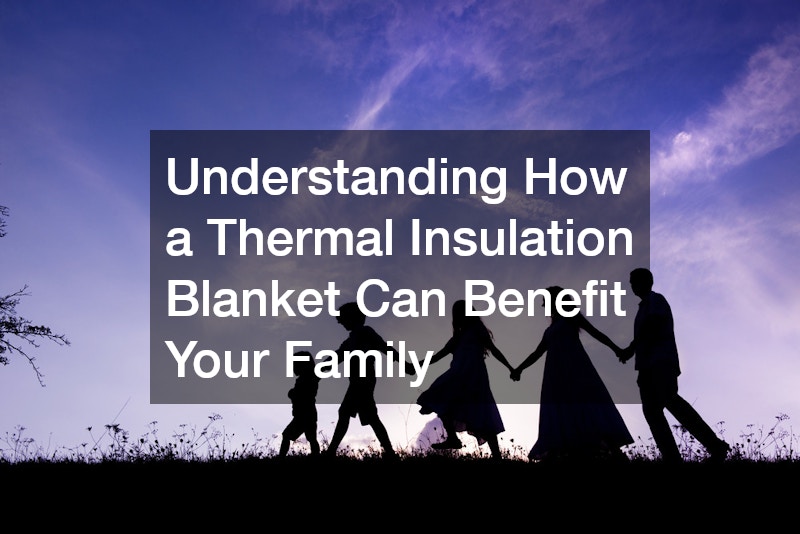
In this article, we will explore how thermal insulation blankets can play a crucial role in promoting energy efficiency and enhancing comfort within your home. But before diving into the specifics, let’s discuss what exactly a thermal insulation blanket is and how it functions. These innovative solutions are designed to optimize the thermal regulation in residential environments, ensuring that homes are both comfortable and energy-efficient.
How Does a Thermal Insulation Blanket Work?
Mechanism of Heat Retention
Thermal insulation blankets are engineered to minimize the flow of heat through various surfaces, preserving the desired temperature inside your home. They work by using materials that significantly slow down thermal transfer, acting as a barrier against unwanted heat exchanges. The efficiency of a thermal insulation blanket can drastically improve a household’s ability to maintain warmth in winter and coolness in summer.
By creating such barriers, these blankets help reduce the workload on heating and cooling systems, leading to less energy consumption. This process not only aids in maintaining optimal indoor temperatures but also supports a sustainable lifestyle. Such mechanisms are important because reducing the need for constant temperature adjustments can result in lower utility bills.
Materials Used in Thermal Insulation Blankets
These blankets are commonly made from materials such as fiberglass, foam, or reflective layers that provide effective insulation properties. Fiberglass is often favored for its lightweight nature and exceptional heat-retentive capabilities. Foam, on the other hand, provides excellent thermal resistance and is easy to install in various areas of a home.
Reflective layers or surfaces are also frequently used in thermal insulation blankets, notably for their ability to reflect radiant heat away from living spaces. This particular material is efficient in regions with high exposure to sunlight, as it helps keep the interiors cooler. The choice of materials plays a pivotal role in defining how best to utilize these blankets for both economic and environmental benefits.
Applications in Different Household Areas
Thermal insulation blankets can be used in various parts of the home, including attics, walls, and floors to improve energy efficiency and occupant comfort. In attics, they minimize heat loss in the winter and reduce heat gain in the summer. This strategic positioning significantly enhances the temperature regulation capabilities within a household.
When used in walls, thermal insulation blankets create an extra layer of protection against external temperatures, maximizing indoor climate control. Floors equipped with these blankets lead to more comfortable and stable living conditions, especially in homes with drafts. The versatility of the application makes thermal insulation blankets a valuable asset in any household environment.
What Are the Benefits of Using a Thermal Insulation Blanket?
Energy Efficiency and Reduced Utility Bills
By reducing heat loss in the home, thermal insulation blankets can lead to significant savings on heating and cooling costs. They facilitate a decrease in the energy demand for HVAC systems, promoting a more efficient household operation. As a direct consequence, families can enjoy lowered utility bills, benefiting financially while also supporting environmental initiatives.
Moreover, the decrease in energy usage contributes positively to the environment by reducing greenhouse gas emissions. Particularly during extreme weather conditions, these blankets ensure homes require minimal energy to maintain comfort. This dual advantage of cost savings and eco-friendly living makes thermal insulation blankets a wise investment.
Enhanced Comfort and Temperature Regulation
These blankets help maintain a consistent indoor temperature, ensuring a more comfortable living environment throughout the year. Regardless of external weather conditions, the blankets provide a reliable thermal barrier that fortifies the home against temperature swings. Such a setup is especially beneficial for families as it ensures comfort without excessive use of heating or cooling devices.
Constant temperature regulation promotes health and well-being by reducing cold drafts and overheating within living spaces. This creates an inviting and comfortable atmosphere that enhances the overall living experience. Whether during summer or winter, the consistent temperature provided by thermal insulation blankets makes homes cozy and pleasant.
Environmental Impact and Sustainability
Using thermal insulation blankets contributes to reducing carbon footprints and promotes a more sustainable lifestyle by minimizing energy consumption. This small change at the household level can have a cumulative positive impact on the broader environment. The energy saved translates directly into reduced reliance on non-renewable resources, supporting global ecological efforts.
Understanding the functionality and benefits of thermal insulation blankets can help your family make informed decisions regarding home insulation. Investing in these solutions not only enhances comfort but also supports long-term cost savings and environmental responsibility. By committing to such eco-friendly practices, families not only enhance their quality of life but also contribute positively to the world around them.
.




